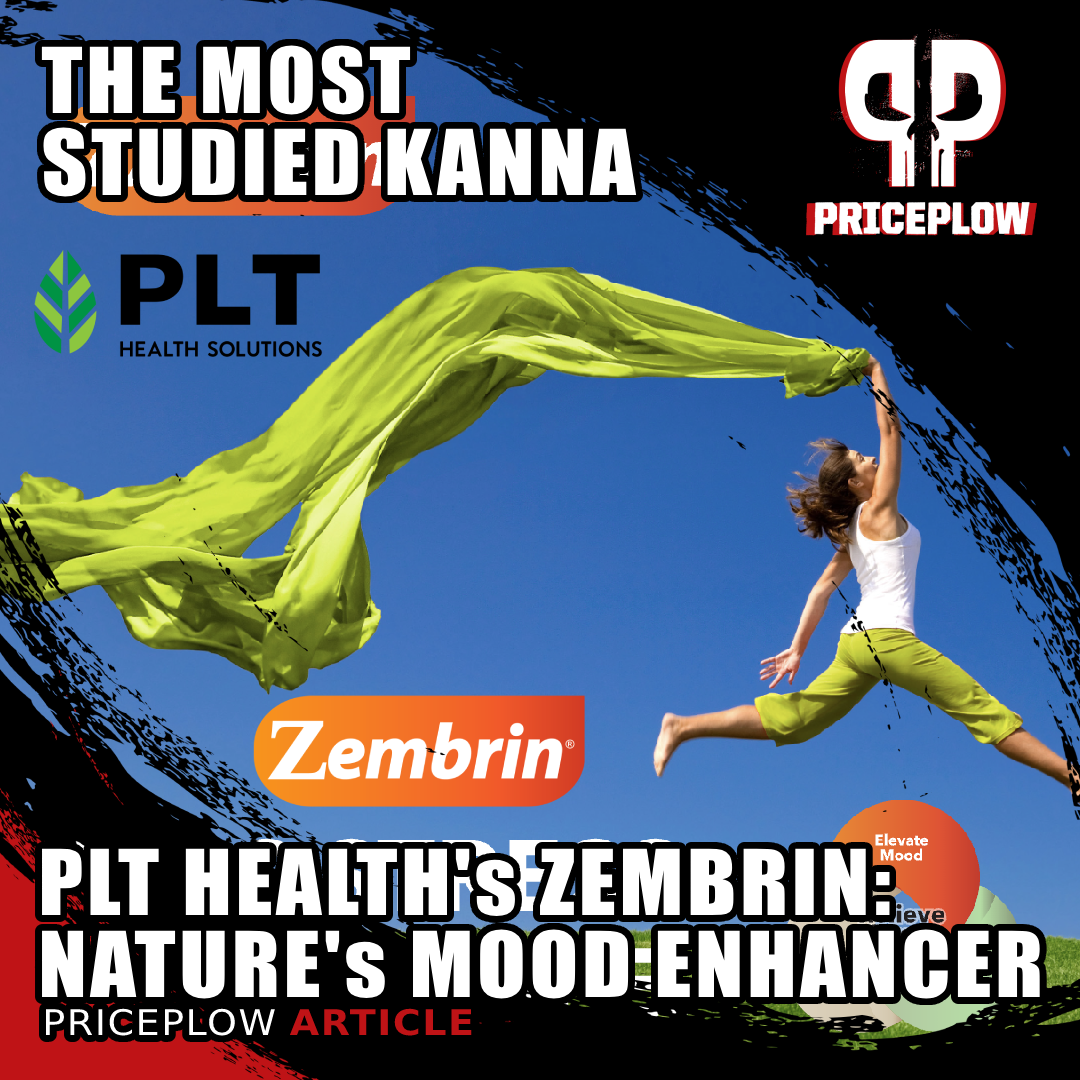
There's only one patented, standardized, and clinically-studied kanna extract on the market: Zembrin from PLT Health Solutions.
To succeed in the modern world, you need the endurance to handle both mental and physical stressors. Fortunately, the ancestral cultures of southern Africa have a compelling solution.
We're talking about kanna, scientifically known as Sceletium tortuosum.
Kanna is a succulent plant whose leaves were prized by these cultures for their ability to fight fatigue and elevate mood.[1] Hunters commonly chewed fermented kanna leaves before and during high-stress situations, where the stakes were quite literally life and death.[2]
Chewing leaves was not the only route of administration, though. Literature also reports that kanna was often brewed into a tea or smoked, depending on user preference.[3]
PLT Health Solutions’ Zembrin – The Only Clinically Studied Kanna Extract
Currently, there is only one patented, standardized, and clinically-studied kanna extract on the nutritional supplement market: Zembrin from PLT Health Solutions.
Few supplement ingredient developers demonstrate a stronger commitment to scientific rigor than PLT Health Solutions, and it shows in the history of Zembrin's development. This product has been studied for more than a decade, first appearing in 2010, receiving industry recognition for its consistency and sustainable sourcing.
To date, Zembrin has been the subject of seven human clinical trials.
We'll discuss some of those studies in this article, but first, sign up for PricePlow's Zembrin and PLT Health news alerts so that you stay informed, and let's cover some background on kanna:
Subscribe to PricePlow's Newsletter and Alerts on These Topics
Sceletium tortuosum: Nature’s Ultimate Mood Enhancer?
Although PricePlow doesn't advocate smoking, chewing leaves and drinking herbal infusions can be a healthy practice if done with the right substances. Of course, we must be cautious with traditional remedies – while many are ultimately vindicated by modern science, some do not withstand rigorous scrutiny. When it comes to kanna, we should look for properly standardized extracts with known mechanisms of action and documented clinical efficacy.
To understand how Zembrin works, one needs to know a bit about the constituents found in kanna:
Kanna contains a group of constituents called the mesembrine alkaloids, which are thought to be responsible for the biochemical activity of the plant, including serotonin reuptake inhibition activity.[4,5] This is the same mechanism behind popular mood-enhancement drugs.
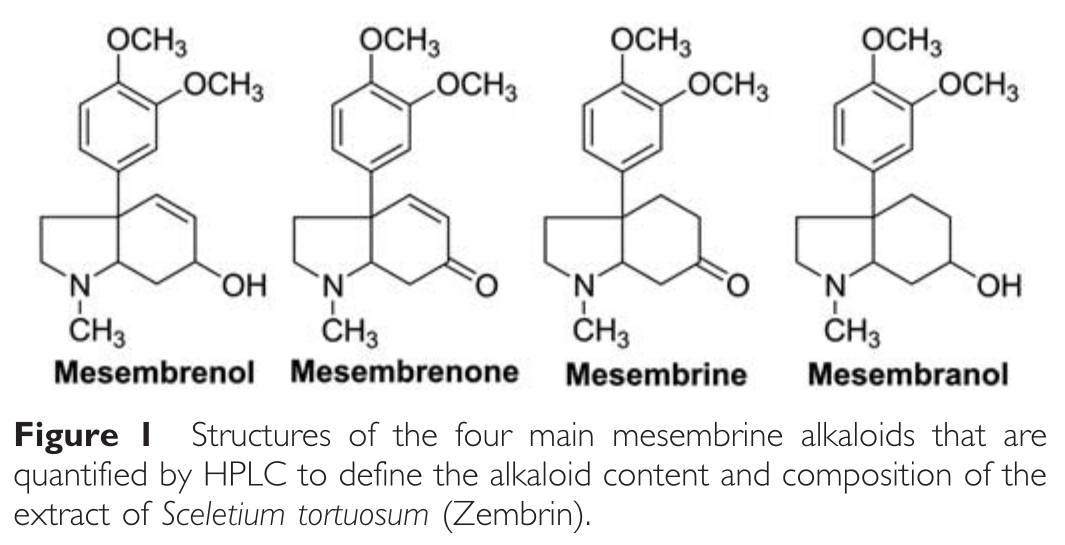
Although mesembrine is the best known bioactive constituent in kanna, the plant also contains seven other closely related alkaloids that work as an entourage to produce its effects. But getting these compounds in the right balance is critical to achieving reproducible and desirable effects of kanna.[6]
To understand how Zembrin might increase feelings of connectedness, it's important to note that it's also a phosphodiesterase-4 (PDE-4) inhibitor.[5] PDE-4 inhibition can improve mood and cognitive function by increasing cyclic adenosine monophosphate (cAMP) levels in the brain, which enhances neuroplasticity and neurotransmission.[7]
This modulation of cAMP can alleviate mood-related symptoms and feelings of anxiety,[8] contribute to better cognitive performance, and maintain brain health in the long term. Recent clinical trials indicate that PDE-4 inhibitors are a potential adjunct therapy for mood and cognitive disorders, supporting the efficacy of existing treatments.[8] PDE-4 inhibition also has the potential to aid in age-related neurodegenerative illnesses,[9] with numerous clinical drug trials pursuing this line of treatment.
With the background covered, let's look at the research on kanna -- specifically Zembrin:
The Zembrin Research Studies
Zembrin is distinct from generic kanna. It is sustainably produced from a unique cultivar of Sceletium tortuosum, resulting in a unique phytochemical fingerprint, and a unique activity on mood and cognition that other kanna does not produce. The alkaloid profile in Zembrin is rich in mesembrenone and low in mesembrine. This selection accounts for its demonstrated clinical efficacy for physical and emotional stress, anxiety, enhanced mood and mental focus, and even reducing soreness following unaccustomed exercise.
Unlike other kanna, Zembrin is a clinically studied, safe, well-tolerated, and efficacious botanical extract. Zembrin is the only kanna extract to show significant improvement in key cognitive domains such as cognitive flexibility and executive function. A functional MRI (fMRI) study showed that Zembrin has a rapid effect on the part of the brain that responds to threat/stress.[6] Let's take a look at Zembrin's mechanisms of action.
-
Zembrin mechanisms of action
In 2011, a study was conducted to investigate the pharmacological actions of Zembrin and its principal alkaloids. This research focused on its mechanisms of action on the central nervous system and aimed to validate its potential benefits.[5]
The researchers tested it on a panel of receptors, enzymes, and other drug targets, along with three purified alkaloids: mesembrine, mesembrenone, and mesembrenol. The key findings were as follows:[5]
- Serotonin Transporter Inhibition
The extract was a potent blocker in 5-HT transporter binding assays, with mesembrine showing the highest activity against the serotonin transporter. This suggests that Zembrin can effectively inhibit the reuptake of serotonin, which is a mechanism similar to that of selective serotonin reuptake inhibitors (SSRIs).
- Phosphodiesterase-4 (PDE4) Inhibition
Zembrin exhibited powerful inhibitory effects on the PDE4 enzyme. Mesembrenone, in particular, showed significant activity against PDE4. Inhibiting PDE4 can enhance cyclic adenosine monophosphate (cAMP) levels in the brain, improving mood and cognitive function.
- Selective Action
The study demonstrated that the extract selectively inhibited the 5-HT transporter and PDE4 without affecting other phosphodiesterases or causing cytotoxic effects on mammalian cells. This selective action supports the safety and targeted efficacy of Zembrin.
The results of this study provided excellent early evidence for the mechanisms by which Zembrin could (and would later be demonstrated to) exert its effects on the CNS, highlighting its potential as a natural mood enhancer and cognitive booster.
- Serotonin Transporter Inhibition
-
fMRI Study – Attenuates Threat Response (2013)
In this randomized, double-blind, placebo-controlled, crossover study, 16 healthy undergraduates with an average age of 19 were enrolled from the University of Cape Town in South Africa.[6]
The researchers were explicit about wanting to evaluate Zembrin as a dual serotonin reuptake and PDE-4 inhibitor. Since earlier studies showed significant efficacy boosts from co-administering PDE-4 inhibitors alongside SSRIs, they wanted to determine whether a natural dual inhibitor like Zembrin could achieve similar efficacy.
The study examined Zembrin's ability to modulate the relationship between the amygdala, the hypothalamus, and the fear response. The amygdala alerts the hypothalamus to the presence of threats, activating the fight-or-flight response. Mood disorders can heighten this interaction, causing exaggerated fear responses and prolonged stress as the brain remains in a heightened state of alertness and worry.
The fear response can be blunted when one is given a cognitive task in which one has a high perceptual load. But under low load conditions, the fear can return. Anxiety is thought of as hyper-responsiveness to threat and stress. The symptoms are less noticeable under high perceptual load, but then the resting fear state can return under low perceptual load.
In people with dysregulated emotions, it can be therapeutically useful to weaken the connection between the amygdala and the hypothalamus, which blunts the fear response.
This study used functional magnetic resonance imaging (fMRI) to assess the subjects' brain activity during two separate tasks that are designed to systematically activate the amygdala:[6]
- Perceptual-Load Task (PLT)
The PLT involves participants identifying 'X' or 'N' within six-letter strings superimposed on unfamiliar faces. High-load trials include mixed target and non-target letters, while low-load trials use identical letters. Participants respond with key presses, counterbalanced across hands. The task examines amygdala activity related to state anxiety by contrasting reactions to fearful versus neutral faces under different cognitive loads, across 24 blocks, revealing the inhibition of threat responses during high-load conditions.
- Emotion-Matching Task (EMT)
The EMT requires participants to match emotional expressions of faces or the orientation of shapes. In emotion blocks, participants match a target face's emotion to one of two probe faces, while in shape-matching blocks, they match the orientation of ovals. This task, interspersed with instructions, reliably activates the amygdala and assesses changes in its connectivity due to pharmacological or state-related factors, providing a stable measure over multiple sessions.
Zembrin administration significantly reduced BOLD signal from the amygdala during low cognitive load conditions on the PLT, which indicates an attenuation of the fear response.[6]
Data from the PLT indicated that Zembrin administration significantly decreased blood oxygenation level-dependent (BOLD) response in the amygdala during low load (i.e., cognitively undemanding) tasks.[6]
Low-load tasks are significant because, during more cognitively demanding tasks, subjects tend to repress the fear response to focus on mental accuracy. Therefore, BOLD signals during low-load tasks correlate better with state anxiety.[6]
in the EMT data, analysis of the BOLD signals from subject brains revealed weaker correlation between amygdala activation and hypothalamus activation, for the Zembrin treatment condition.[6]
When it came to the EMT data, the researchers found something similar: by overlaying BOLD signals from various brain regions, they found that Zembrin administration weakened the relationship between amygdala activation and hypothalamus activation.[6]
These statistically significant effects led the researchers to conclude that Zembrin, through its dual 5-HT reuptake and PDE4 inhibition mechanisms, reduces amygdala reactivity to threat and stress.
- Perceptual-Load Task (PLT)
-
Proof of Concept: The Neurocognitive Effects of Zembrin (Chiu 2014)
With the fMRI study completed, researchers sought to understand the neurocognitive effects of Zembrin, targeting phosphodiesterase-4 (PDE-4) in cognitively healthy subjects.[1] Their goal was to determine whether it could enhance cognitive functions such as executive function and cognitive flexibility. Additionally, the study assessed the safety and tolerability of Zembrin.
Materials and Methods
The study was a randomized, double-blind, placebo-controlled, crossover trial, involving 21 cognitively-healthy subjects aged 45 to 65 years.[1] They were were administered either a 25 milligram Zembrin capsule or a placebo once daily for three weeks, followed by a three-week washout period, and then switched to the other treatment for another three weeks.
Neurocognitive assessments were conducted using the CNS Vital Signs test battery, which measures nine cognitive domains:[1]
- Composite memory
- Verbal memory
- Visual memory
- Processing speed
- Executive function
- Psychomotor speed
- Reaction time
- Complex attention
- Cognitive flexibility
Mood and sleep quality were assessed using the Hamilton Depression Rating Scale (HAM-D).
Adverse events were monitored using the treatment emergent adverse events scale.
Results
Zembrin significantly improved cognitive flexibility and executive function compared to placebo.[1] Improvements were also noted in processing speed, psychomotor speed, and complex attention, though these did not reach statistical significance.
Positive changes in mood and sleep quality were also observed in the Zembrin group.[1] The mean HAM-D scores decreased, indicating improved mood. Participants taking Zembrin reported better sleep quality, particularly in terms of sleep onset.
Zembrin was well tolerated with no significant adverse effects reported.
This study was an early demonstration in Zembrin's ability to safely support cognitive flexibility and executive function in healthy subjects, as well as its potential in improving mood and sleep quality, which could contribute to overall well-being.[1]
The researchers suggested that Zembrin's cognitive-enhancing effects are likely due to its role in modulating the PDE-4-cAMP-CREB signaling pathway,[1] which is crucial for cognitive functions.
-
Increased Cognitive and Positive Emotional Brain Activity (2016)
In 2016, a double-blind, randomized, placebo-controlled study was conducted to investigate the psychophysiological effects of Zembrin.[10] This study involved 60 healthy middle-aged subjects who were given either a single dose of 25 or 50 mg of Zembrin, or a placebo. The researchers utilized a combination of quantitative EEG source density and eye-tracking technology to measure the effects of Zembrin on brain activity during various cognitive and emotional challenges.
The study found that Zembrin significantly increased delta and theta spectral power in the frontal brain during cognitive and emotional tasks.[10] These increases in slow-wave activity are associated with enhanced cognitive processing and emotional regulation.
Additionally, Zembrin increased alpha1 and alpha2 spectral power in the frontal brain, which are linked to relaxation and improved memory, respectively. The higher dosage of Zembrin (50 milligrams) also resulted in increased beta2 waves, indicating enhanced attention and cognitive performance.[10]
EEG measurements indicate significantly greater brain activity in challenging tasks when participants use Zembrin.[10]
The results of this study suggest that Zembrin positively influences brain activity related to cognition and emotion, supporting its use as a natural mood enhancer and cognitive booster.
-
Evaluating Zembrin on Brain Electrical Activity, Mood, and Cognitive Function (2017)
In 2017, researchers published a study evaluating the effects of 25 and 50 milligrams of Zembrin on brain electrical activity, mood, and cognitive function in older adults over a period of six weeks.[11] The trial intended to confirm the results of previous acute dosing studies and to investigate long-term effects through EEG measurements, cognitive tests, and questionnaires.
Materials and Methods
The study was a prospective, randomized, double-blind, placebo-controlled, three-armed trial conducted in a parallel design. The researchers recruited 60 healthy right-handed adults (aged 50-80), dividing them into three groups:
- 25mg Zembrin
- 50mg Zembrin
- Placebo
The participants took their capsule daily for six weeks, and EEG was recorded from 17 surface electrodes before and 1 hour after intake on the first day (baseline) and at the trial's conclusion.
Six cognitive tests were performed, and three questionnaires (Profile of Mood States, Hamilton Anxiety Rating Scale, and a sleep questionnaire) were completed. EEG data were analyzed for changes in spectral power across different brain regions. Cognitive test performance and questionnaire scores were statistically evaluated.
Results
When analyzing the EEG, the researchers found significant increases in delta and theta activity during certain cognitive tasks in the fronto-temporal brain region.[11]
Higher theta activity was seen during relaxation and during the d2-test with 50 milligrams of Zembrin®. Alpha1 and alpha2 spectral power increased in various brain regions, suggesting calming and cognitive enhancing effects.
The Zembrin groups saw significant improvement in arithmetic calculations and number connection tests compared to placebo. There was also a significant decrease in anxiety scores (HAM-A) after six weeks with 50 milligrams of Zembrin.[11]
This study further demonstrated that Zembrin® improved cognitive function, decreased anxiety, and potentially enhanced mood in healthy older adults. Using EEG, it provides solid evidence that Zembrin affects brain electrical activity in ways that correlate with cognitive improvements and reduced anxiety.[11]
The study also showed that higher doses of Zembrin® (50 milligrams) had more pronounced effects on brain activity and cognitive performance than lower doses (25 milligrams) over the course of six weeks.[11]
-
Mitigates Experimentally-Induced Anxiety (2020)
While the fMRI and EEG data are compelling, they are ultimately mechanistic – they strongly predict a reduction in subjective anxiety but did not directly measure it. To confirm that these Zembrin-induced brain changes create the desired effect, we need a human study dedicated to measuring that effect.
The study design was straightforward: two placebo-controlled, double-blind, between-subject (meaning not a crossover study) experimental design studies were conducted with 20 young healthy volunteers each. Study 1 involved a 20-minute multitasking framework to induce stress, measuring subjective mood at three points. Study 2 used a 5-minute simulated public speaking task, measuring anxiety and stress indicators at four points, including physiological indicators like galvanic skin response and heart rate.[12]
The design of the two experiments in this study. Note that "treatment" in both timelines refers to the administration of other Zembrin or the placebo.[12]
Both study 1 and study 2 were designed to create a state of anxiety in the participants so that the researchers could study whether Zembrin administration had any effect on that anxiety. Both experiments included 20 healthy volunteers with an average age of about 19.[12]
Study 2 (the public speaking task) revealed that before performing the task (the pre-stress point), the Zembrin group had a statistically significant reduction in self-reported anxiety.[12]
Study 1 didn't find any significant difference between the placebo group and the Zembrin group, because, according to the researchers, the stress inducer was too weak. However, in part 2 of the study, the results were significant.
Using the State Trait Anxiety Inventory (STAI), a common questionnaire-based tool for measuring anxiety in a clinical setting, as well as the visual analogue anxiety scale (VAa), the researchers detected a statistically significant reduction at the pre-stress time point.[12]
Analysis of the heart rate data showed something interesting:
Analysis of covariance (ANCOVA) revealed that Zembrin had a statistically significant effect on heart rate through the mid-stress time point.[12]
Heart rate is an excellent physiological indicator of stress and is far more objective than either the STAI or the VAa. Therefore, it's significant that statistical analysis showed a reduction in heart rate mid-stress for the Zembrin group.[12] This strongly suggests that, by attenuating the fear response as seen in the previous study,[6] Zembrin helped participants better cope with the psychological and emotional challenge of the public speaking task.[12]
-
Are you ready for a shake-up in the beverage space? PLT Health Solutions has several beverage-stable ingredients, and Zembrin is one of them.
Improves Recovery From Exercise (2021)
Given the mind-body connection and the historical use of kanna as an endurance-boosting substance, we would expect it to have positive effects on exercise performance and recovery – and that's exactly what a 2021 study found.[10]
The study utilized a double-blind, placebo-controlled, between-groups experimental design with 16 non-resistance-trained females. Participants were randomly assigned to either Zembrin (25 milligrams per day) or placebo groups, with supplementation starting post-exercise and continuing for three days. Measurements were taken at baseline and 48 hours post-exercise to evaluate soreness, range of motion (ROM), mood, and muscle damage.[10]
The exercise consisted of a bicep curl descending pyramid with the non-dominant arm. The idea behind using untrained subjects was that the exercise would be particularly stressful for them on both a psychological and physiological level – more so than it would be for trained subjects.[10]
Treatment with Zembrin significantly improved soreness, and range of motion (ROM) 48 hours post-exercise.[10]
Zembrin significantly decreased soreness and increased ROM following exercise. No significant difference was found between the groups with respect to lactate dehydrogenase (LDH). [10]
Zembrin also significantly improved rated perceived exertion (RPE) and profile of mood state (POMS) scores.[10]
A similar effect was seen with max reps, rated perceived exertion (RPE), and profile of mood states (POMS), an inventory designed to quantify a subject's mood. Again, there was a significant difference in RPE and POMS, but not in the max reps.[10]
These results suggest that Zembrin positively influences recovery through analgesic and mood-enhancing effects stemming from its inhibition of serotonin reuptake and PDE-4.[10]
Another possible mechanism is Zembrin's interaction with opioid receptors, which, when activated, can have a positive effect on muscle pain and function following exercise.[10]
Conclusion: Zembrin has a phenomenal combination of effects
The bottom line? Zembrin exerts its mood-boosting, nootropic effects through an extremely rare and interesting combination of mechanisms:
- Inhibits serotonin reuptake, and
- Inhibits PDE-4
...all at the same time.
These mechanisms are synergistic and account for Zembrin's significant benefits for neuropsychiatric health and other CNS-related processes – including but not limited to recovery from exercise— at a low dose of just 25 to 50 milligrams per day.
Although this ingredient is still relatively obscure, PricePlow's review of the literature on kanna has left us convinced that Zembrin is the best-studied kanna extract available, and one of most interesting ingredients on the market right now. There seems to be a ton of unexplored potential here, even after PLT Health's extensive clinical research on Zembrin.
It's worth noting that Zembrin is one of PLT Health's beverage stable ingredients -- we look forward to some exciting new drink formulas to contain the ingredient in the coming months!
You can sign up PricePlow's future news alerts on PLT Health Solutions and Zembrin, and beneath that, see all of our articles mentioning Zembrin:

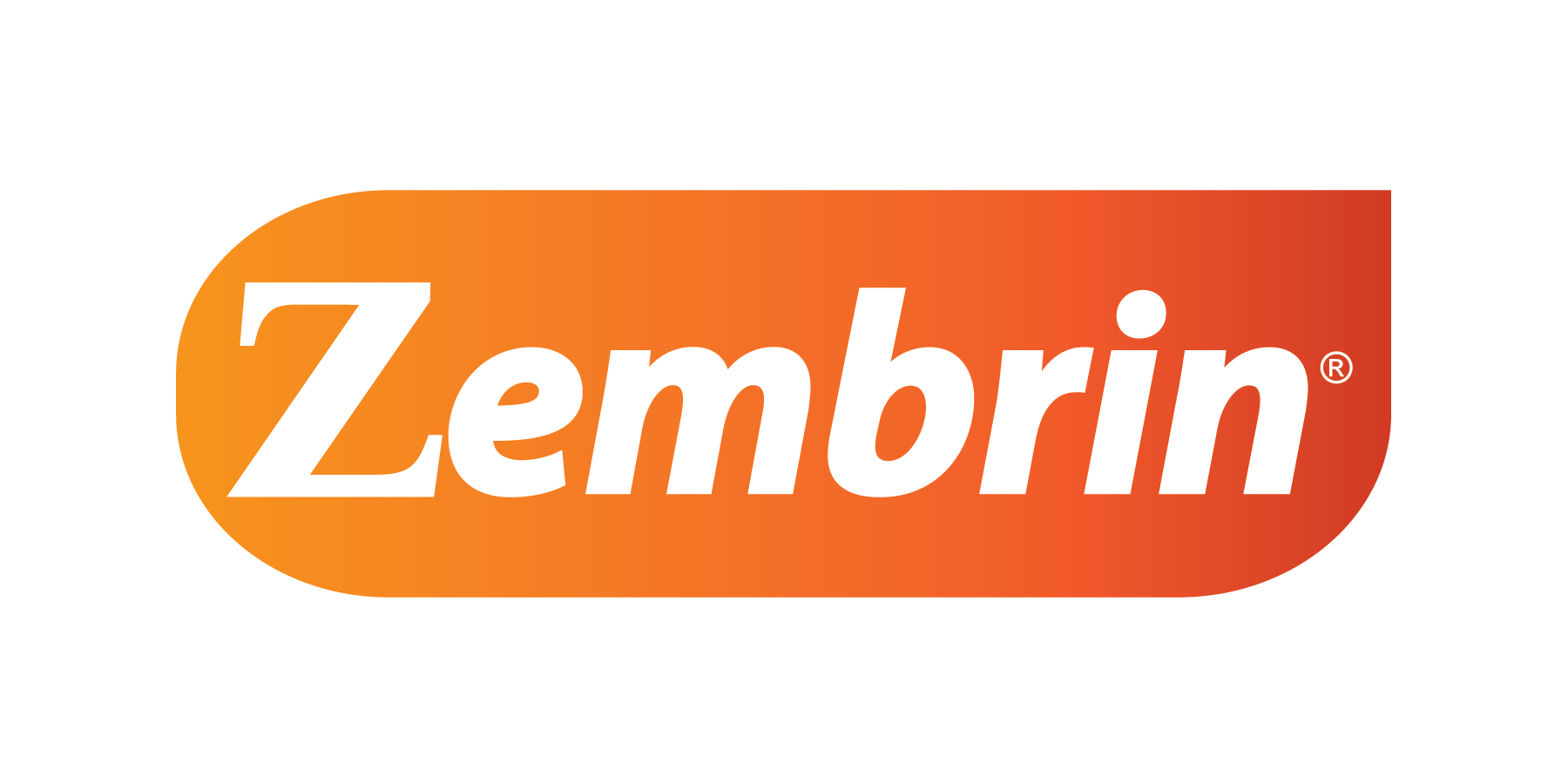



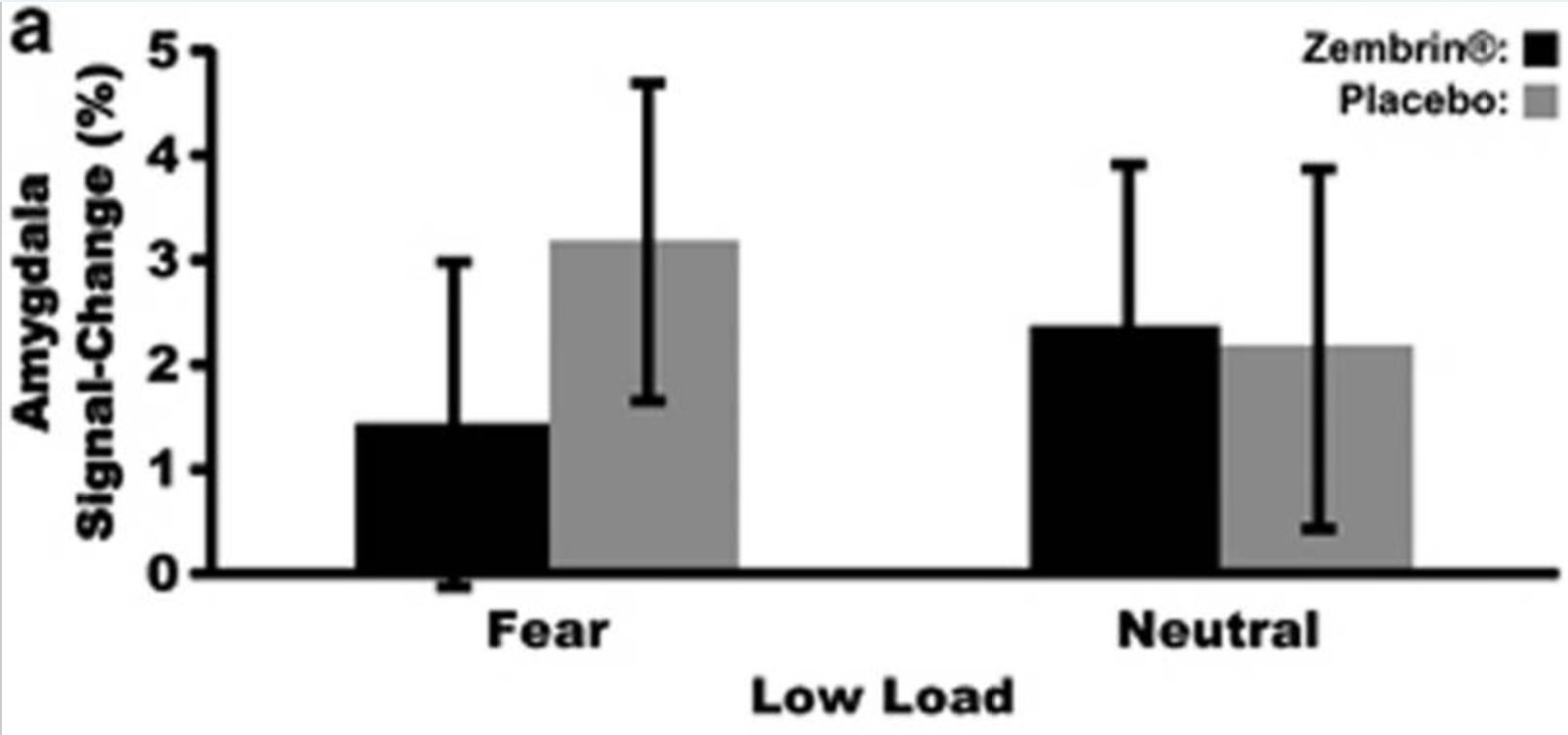
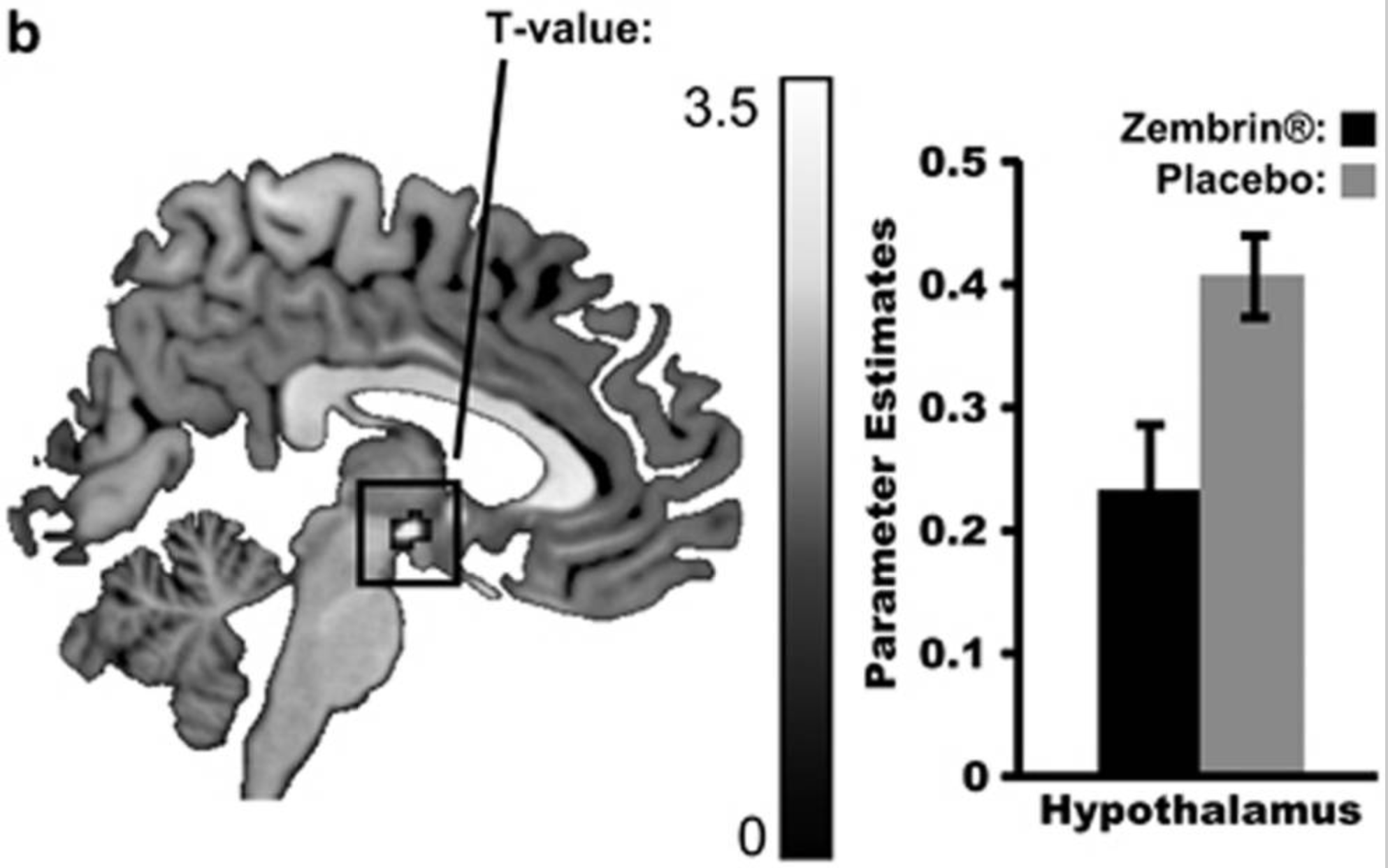
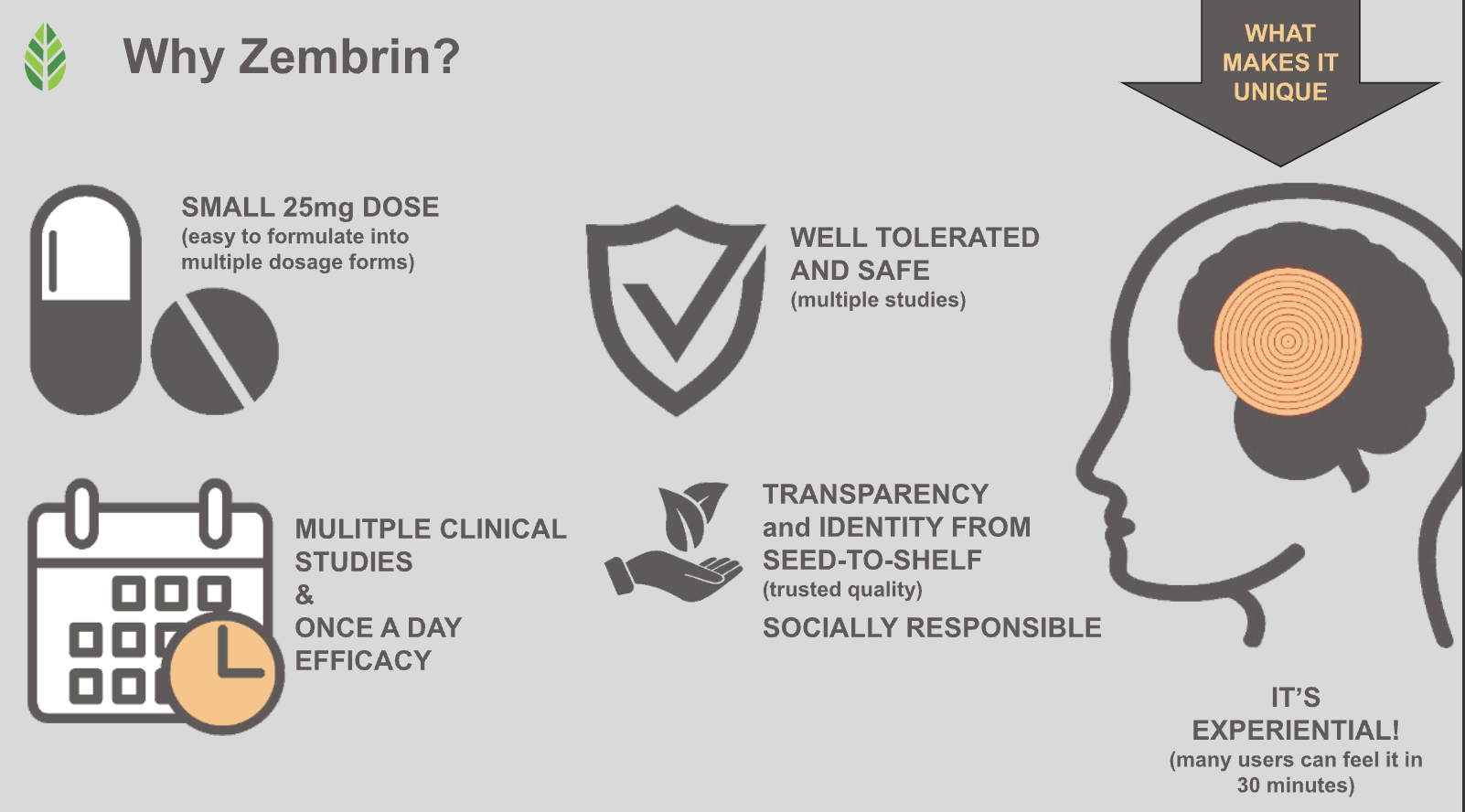

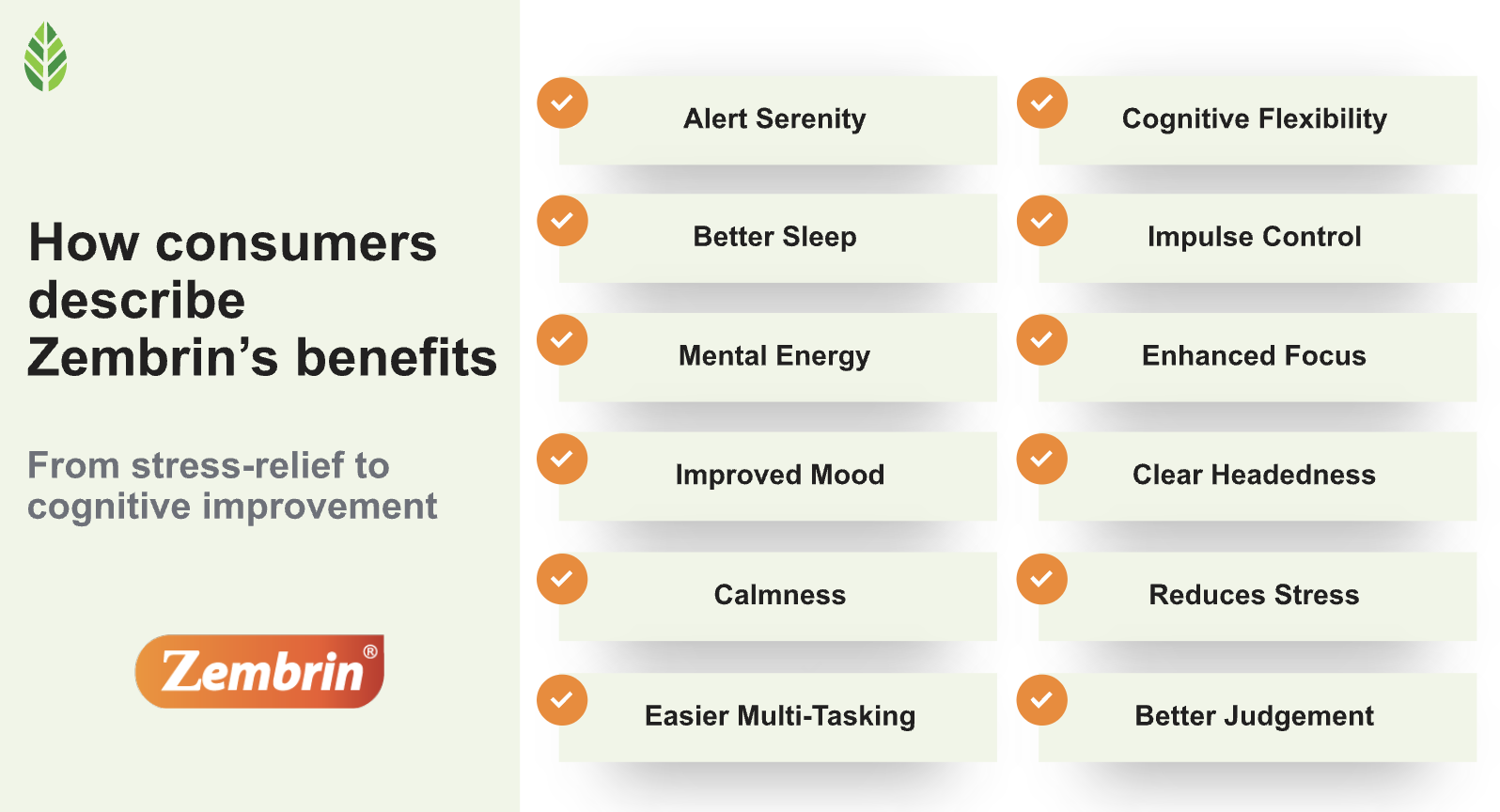
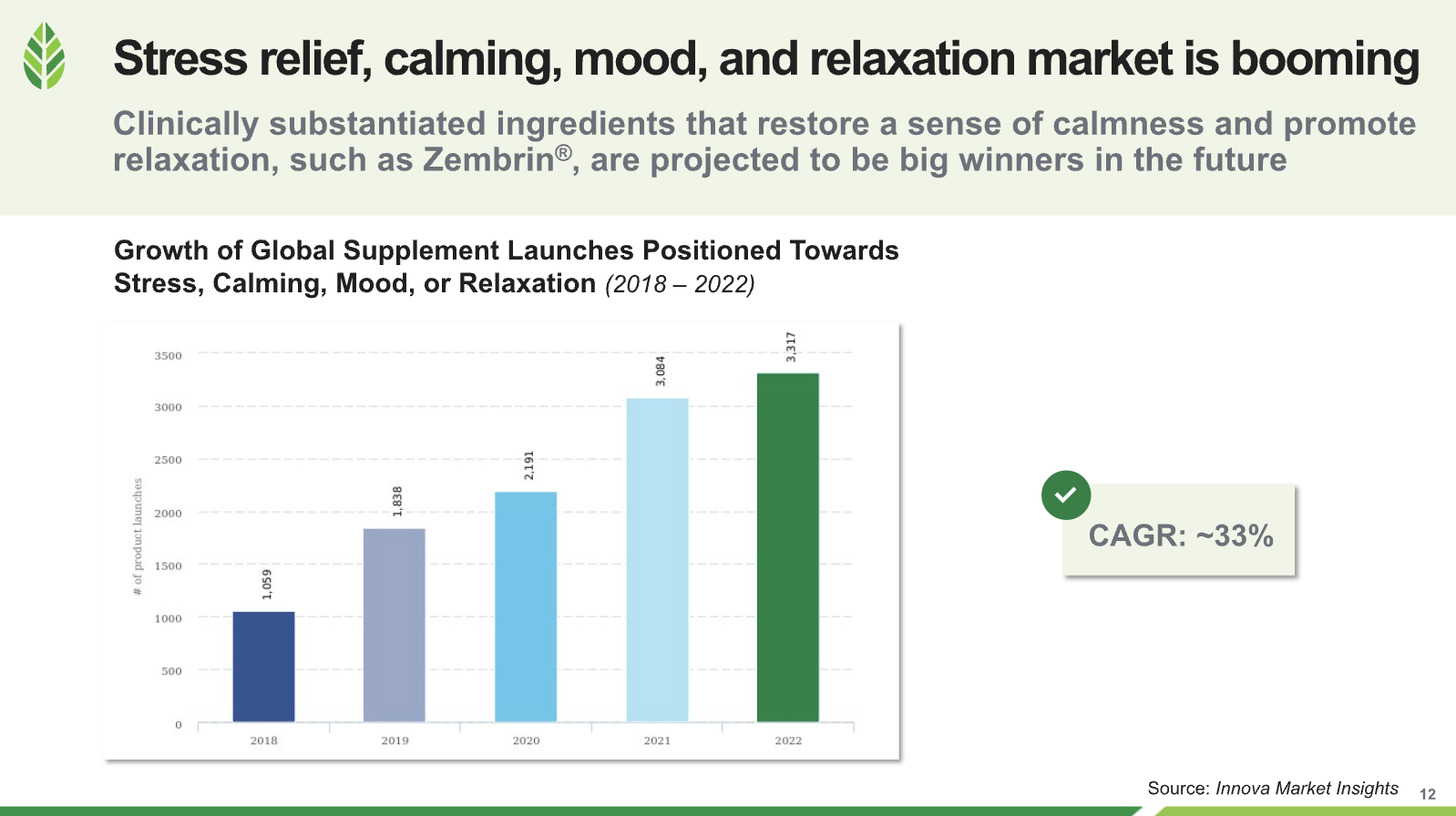
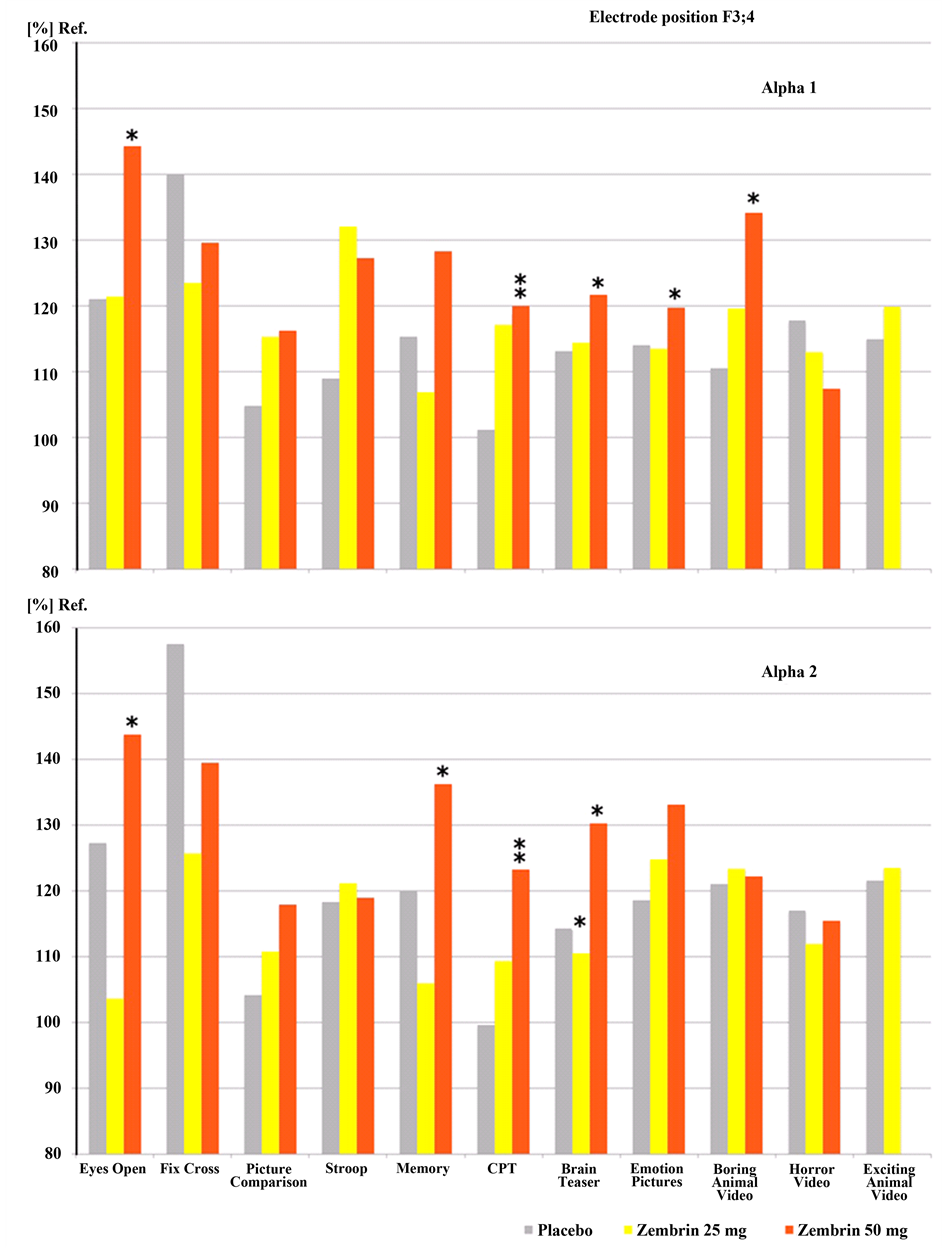
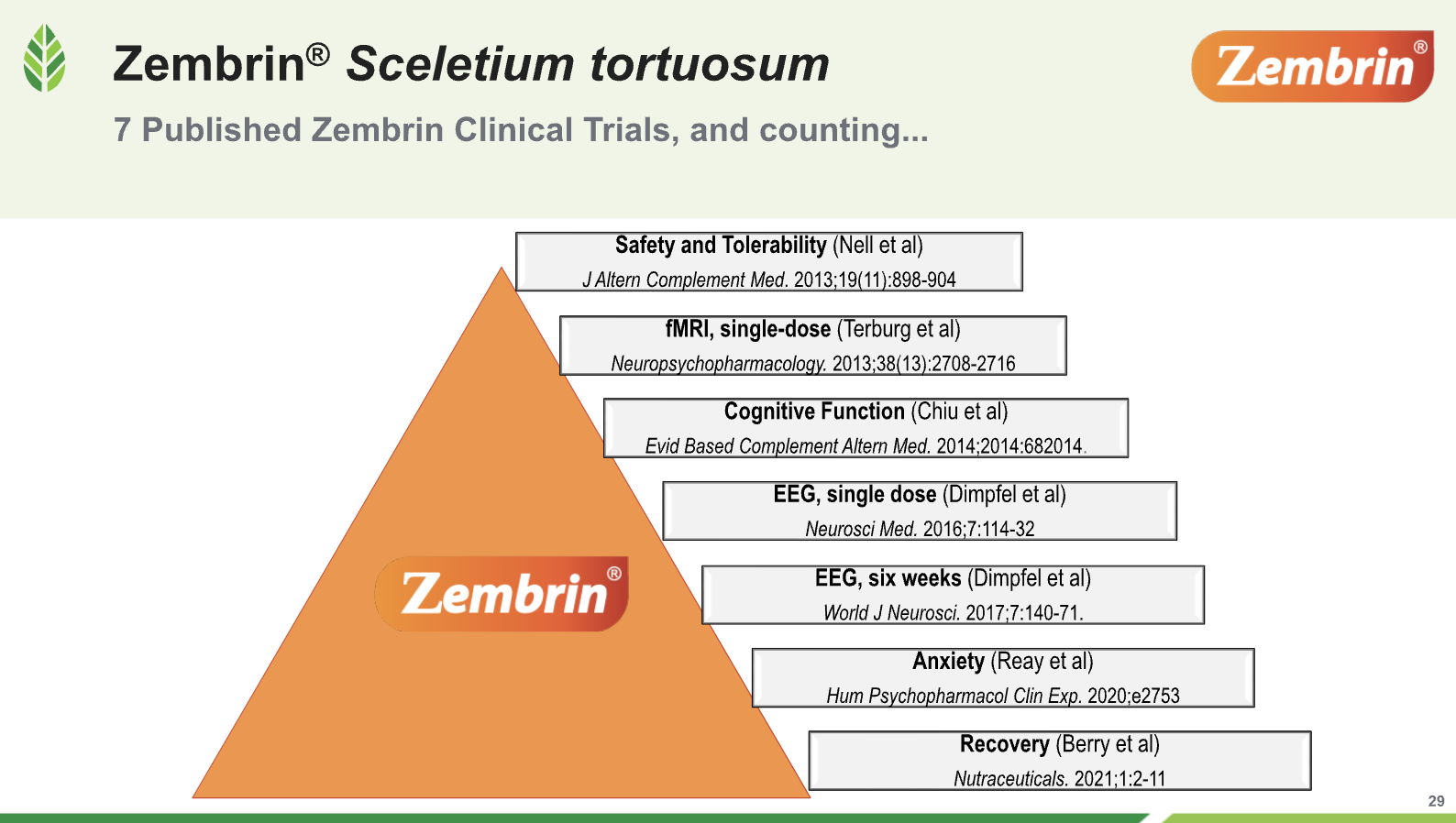
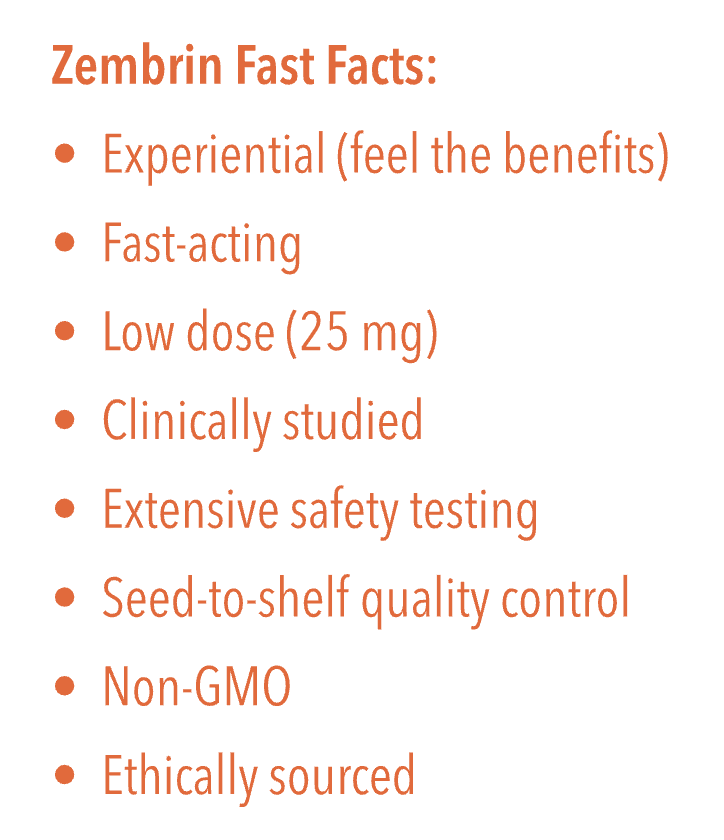

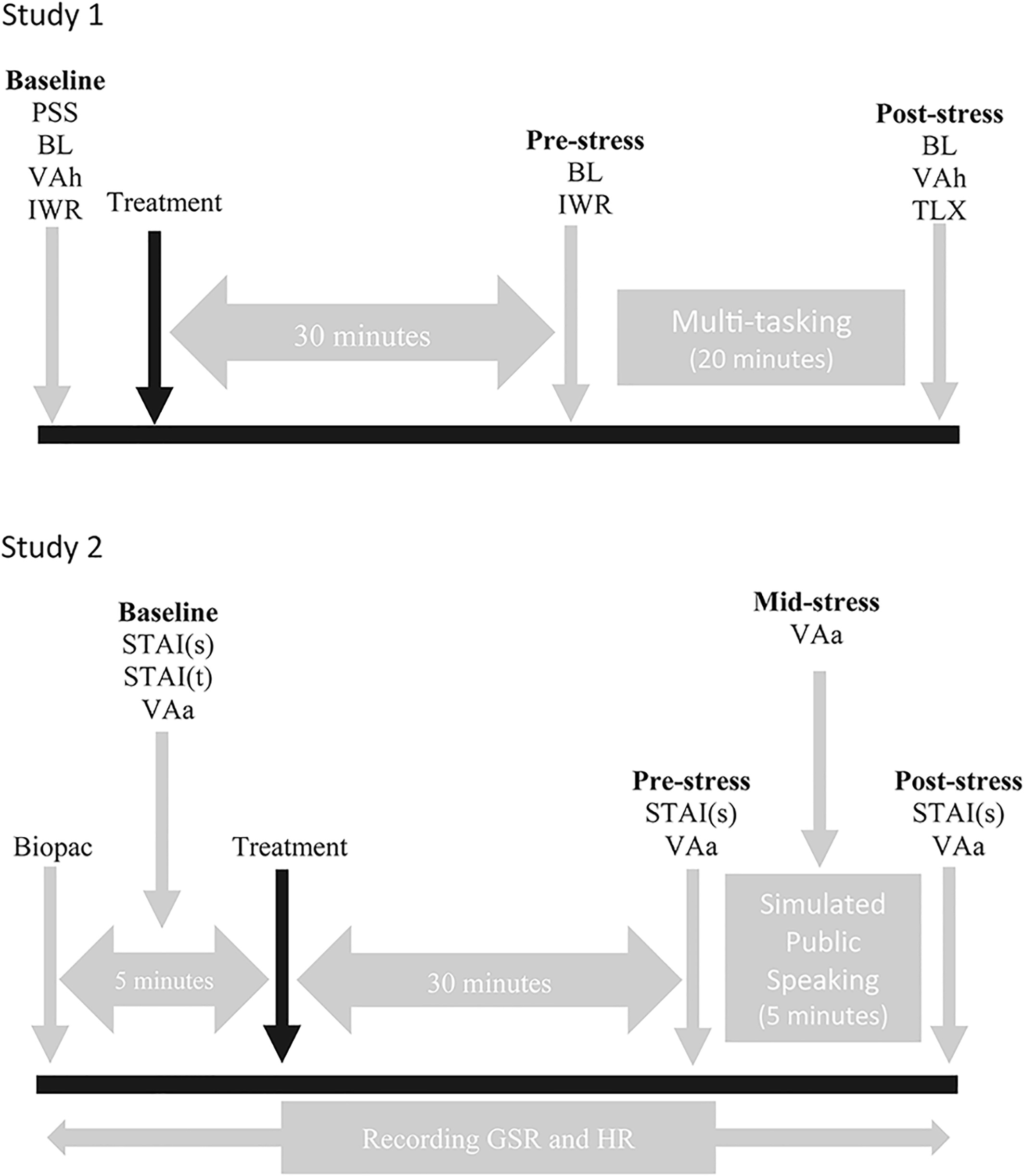
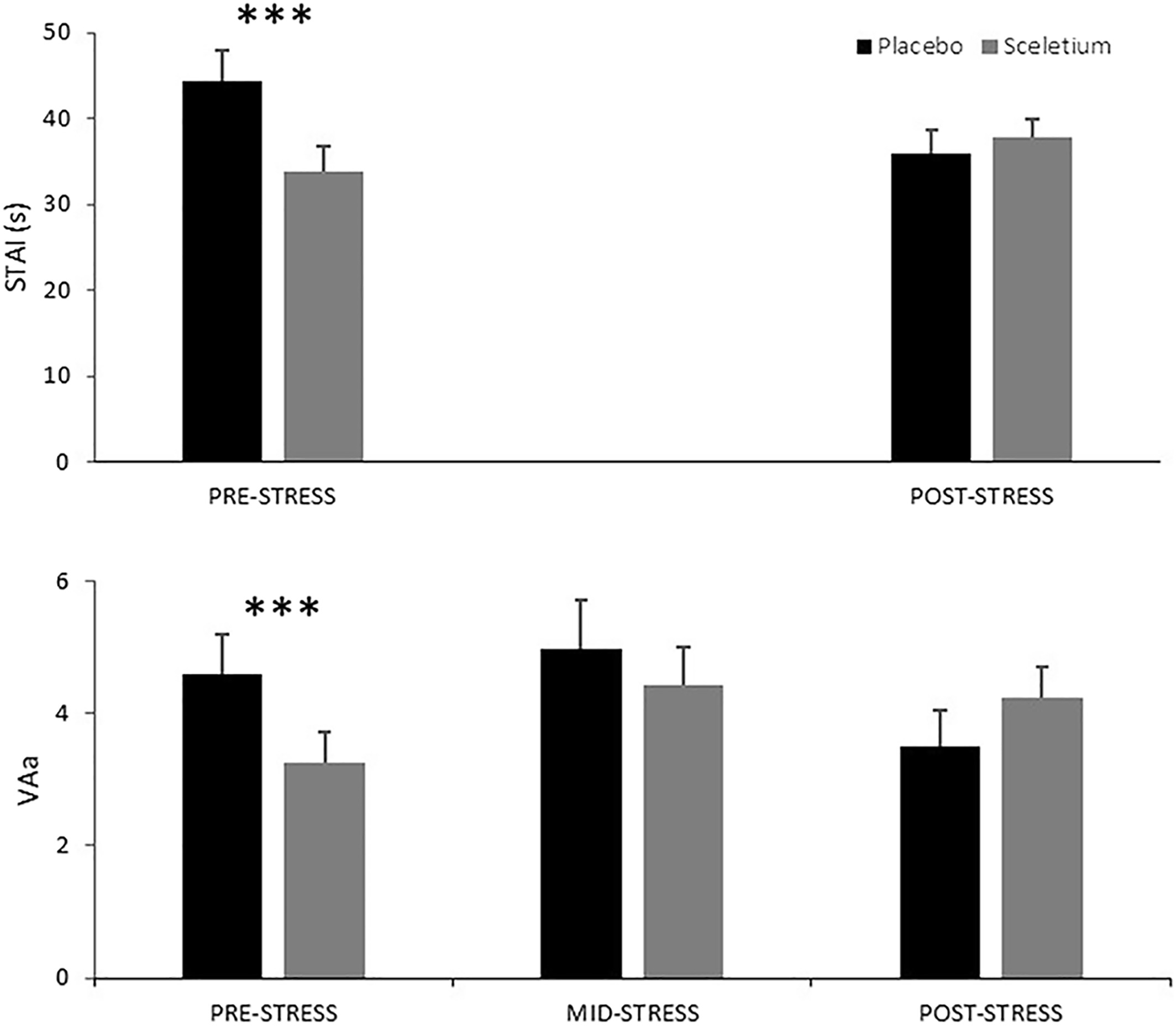
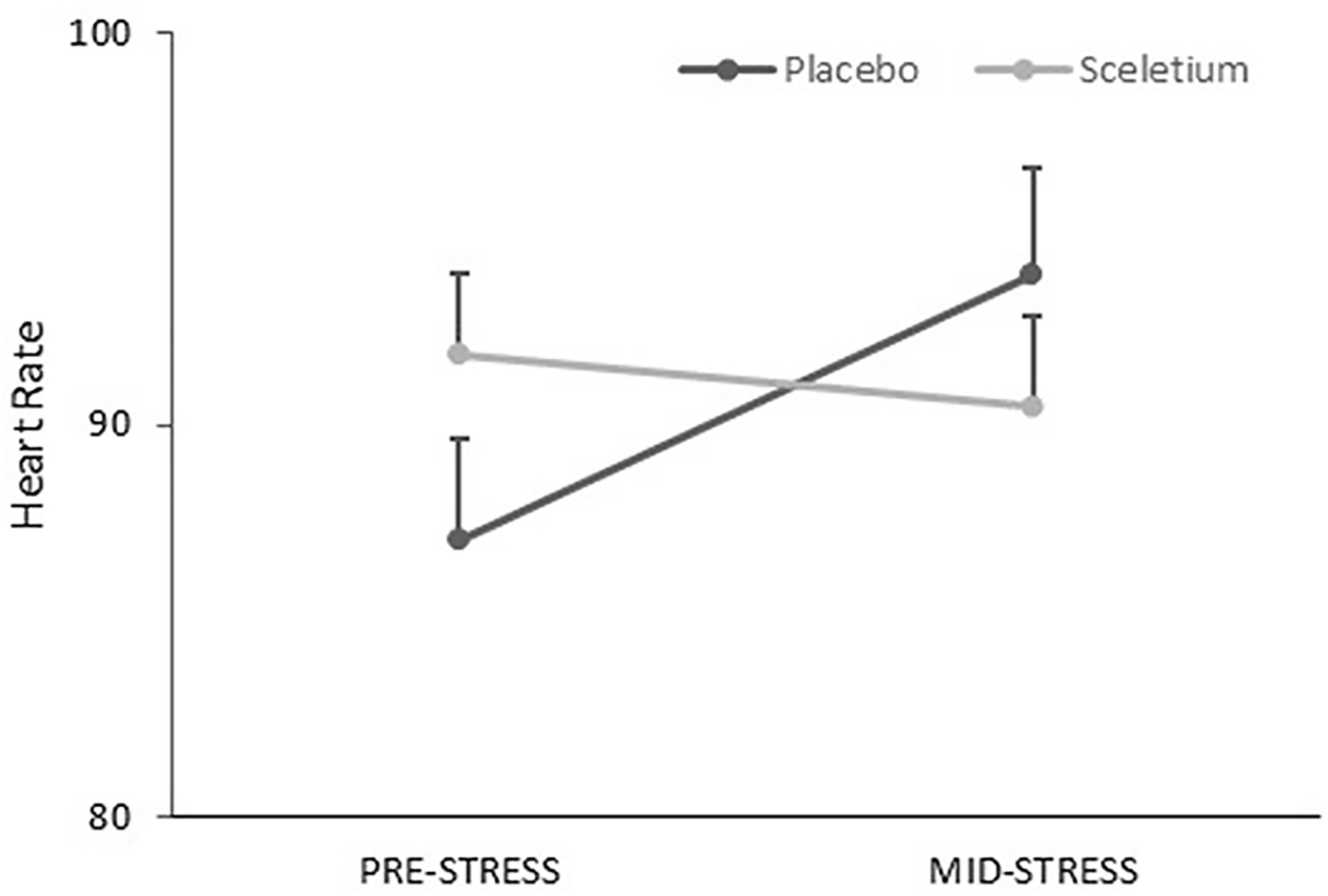

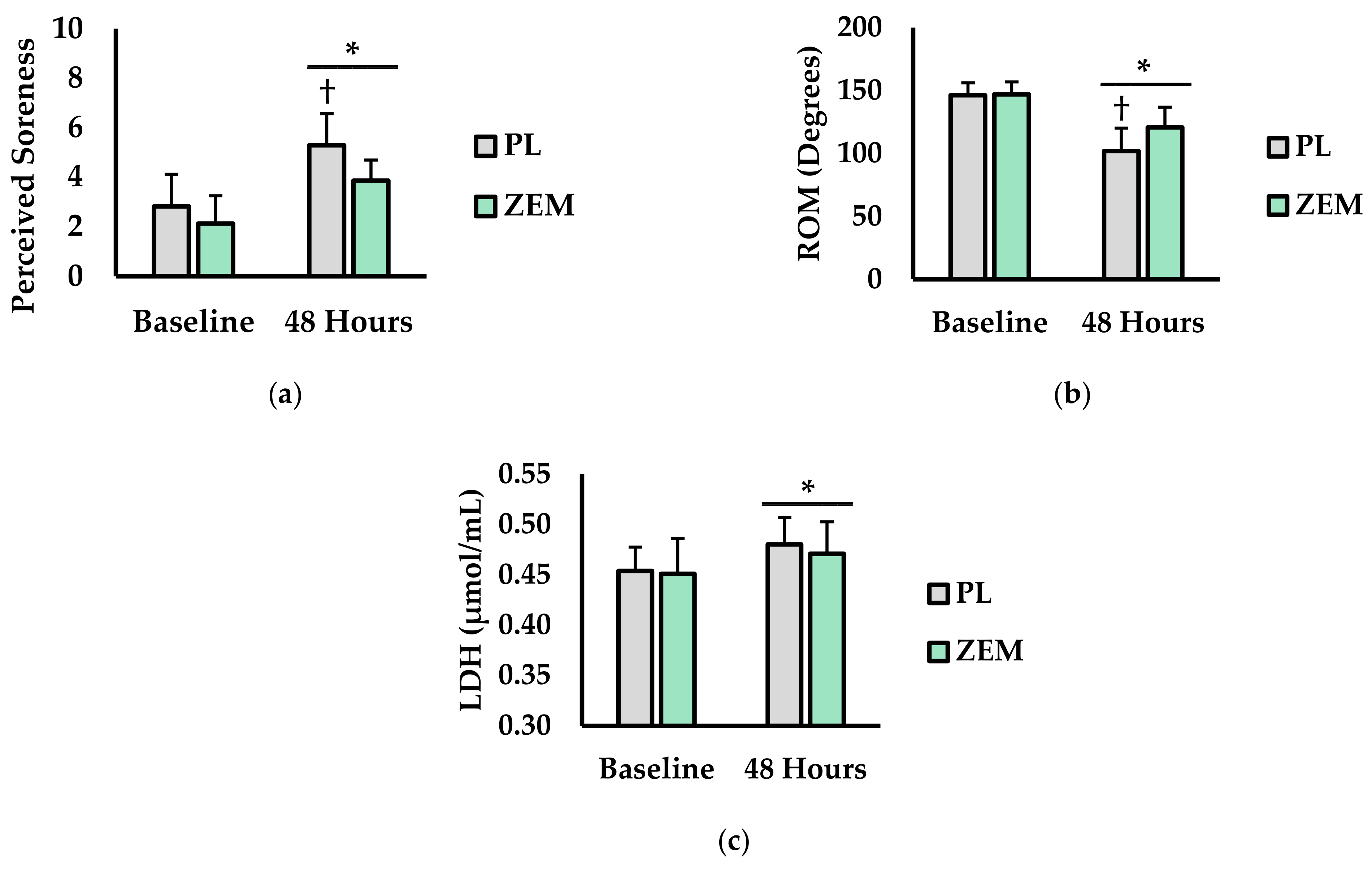
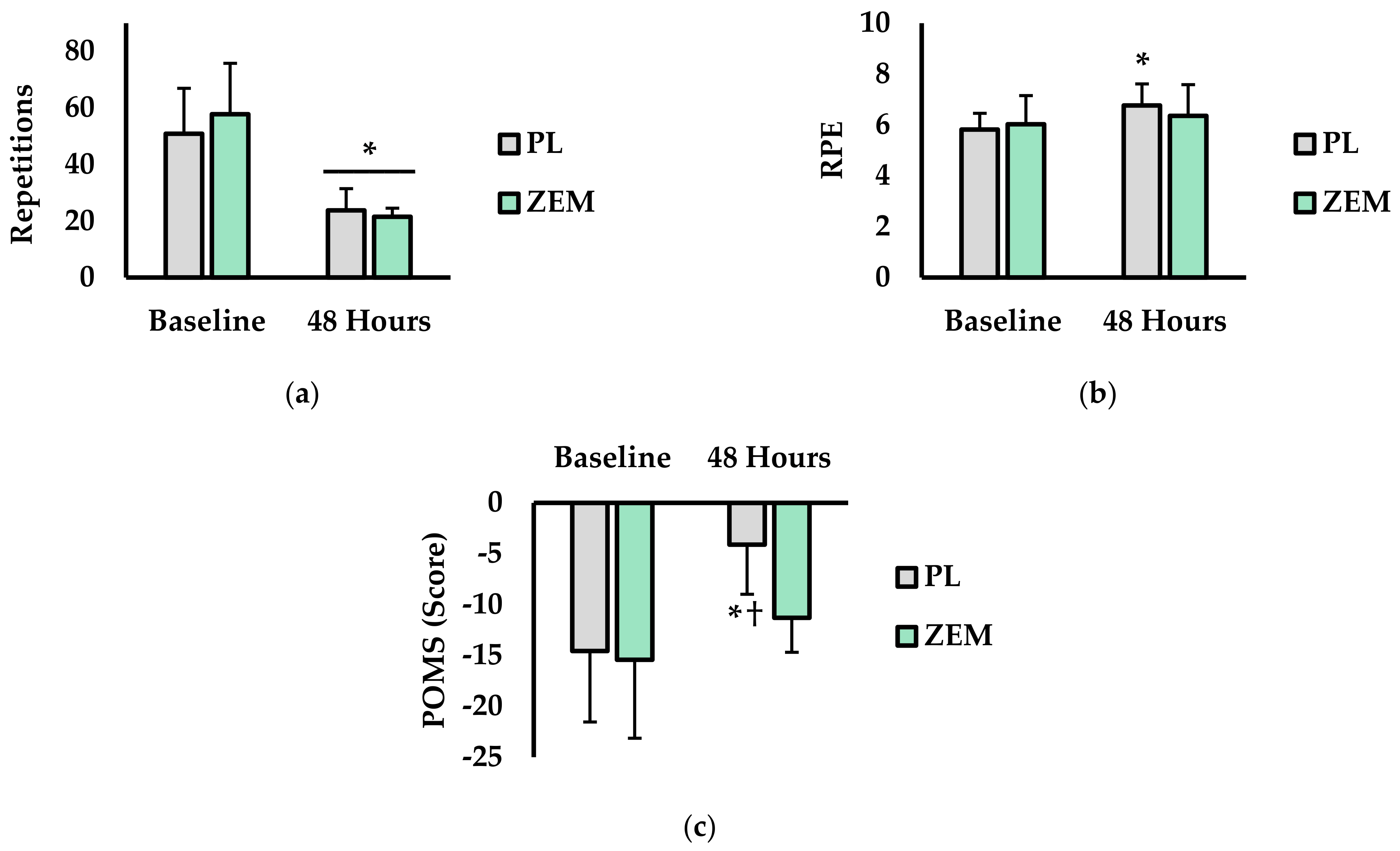

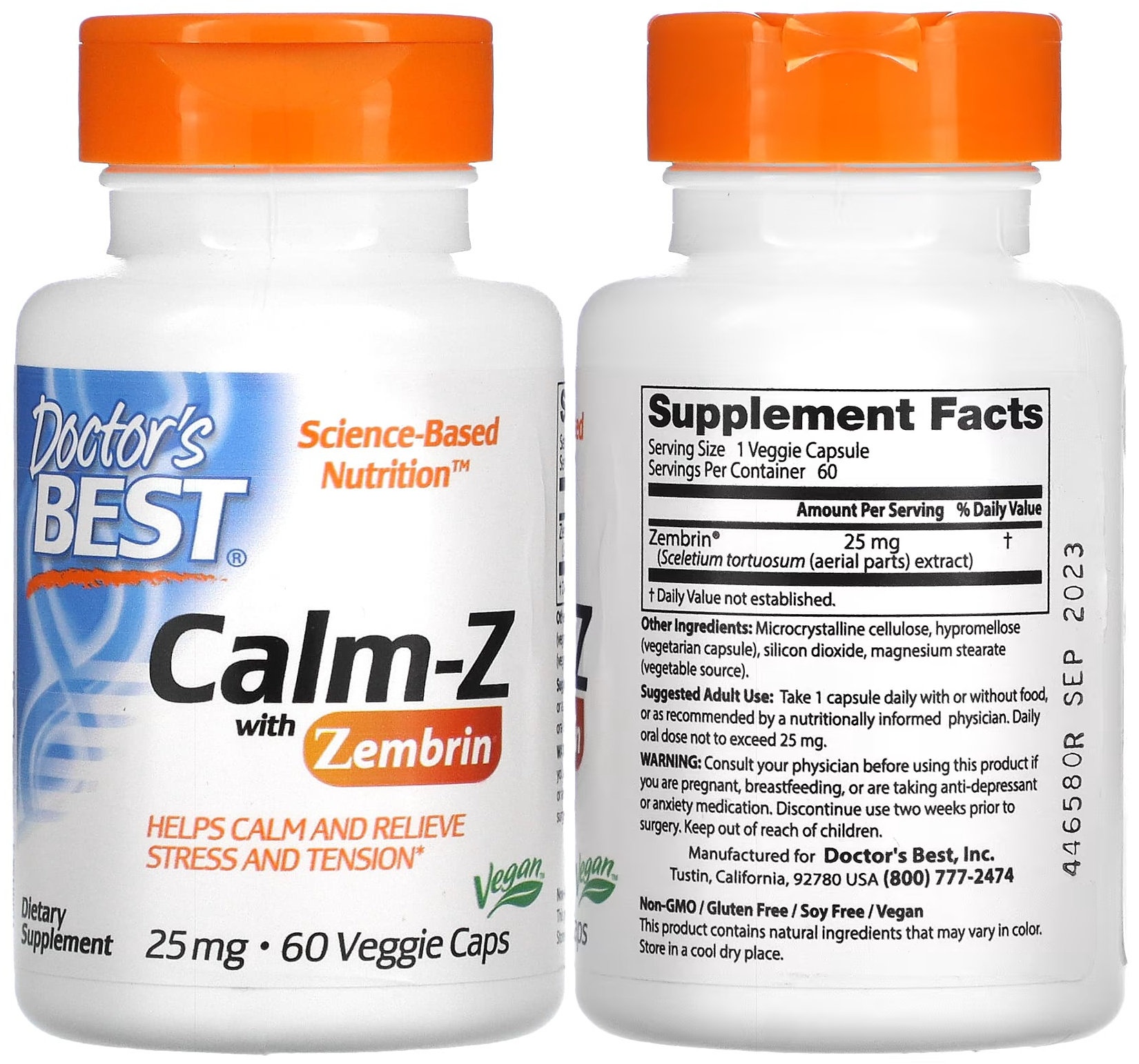


Comments and Discussion (Powered by the PricePlow Forum)